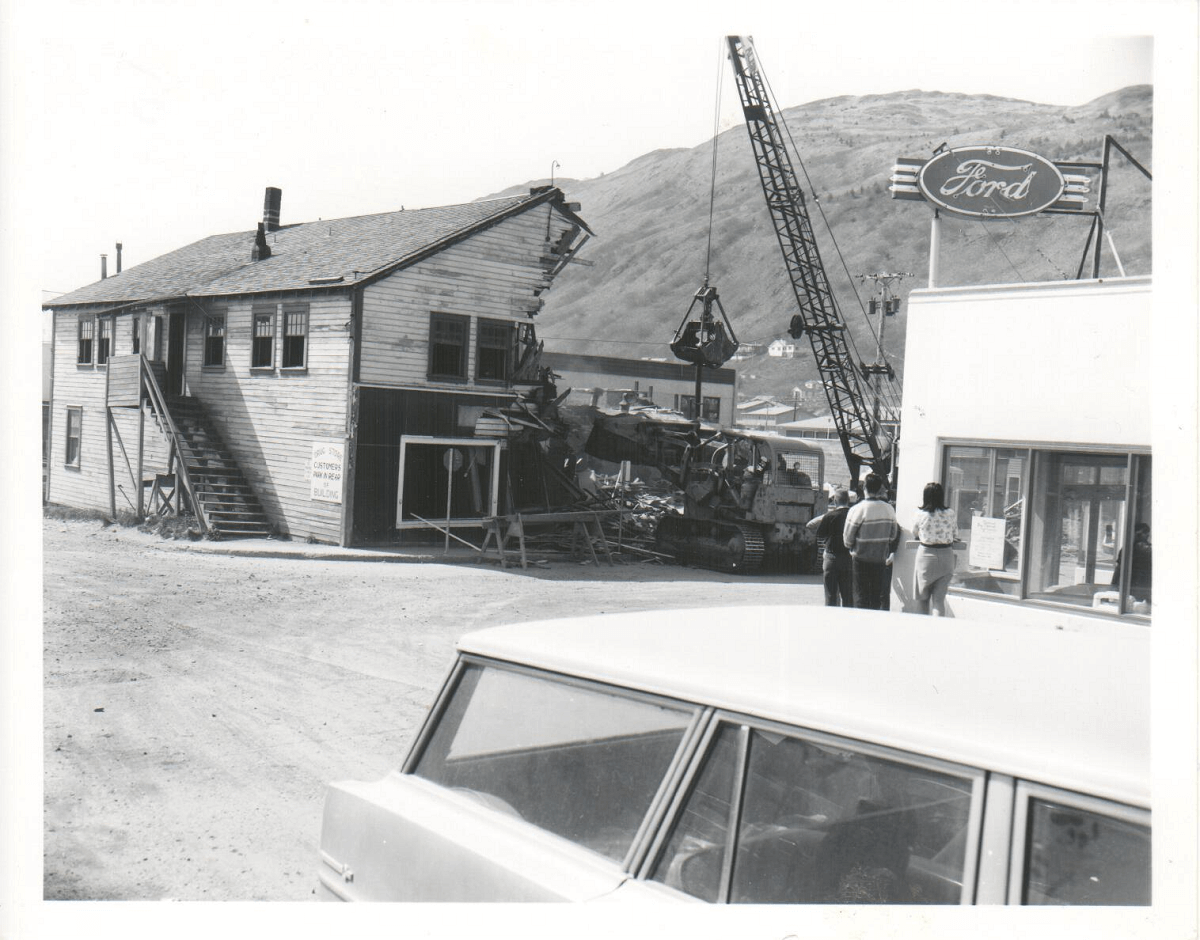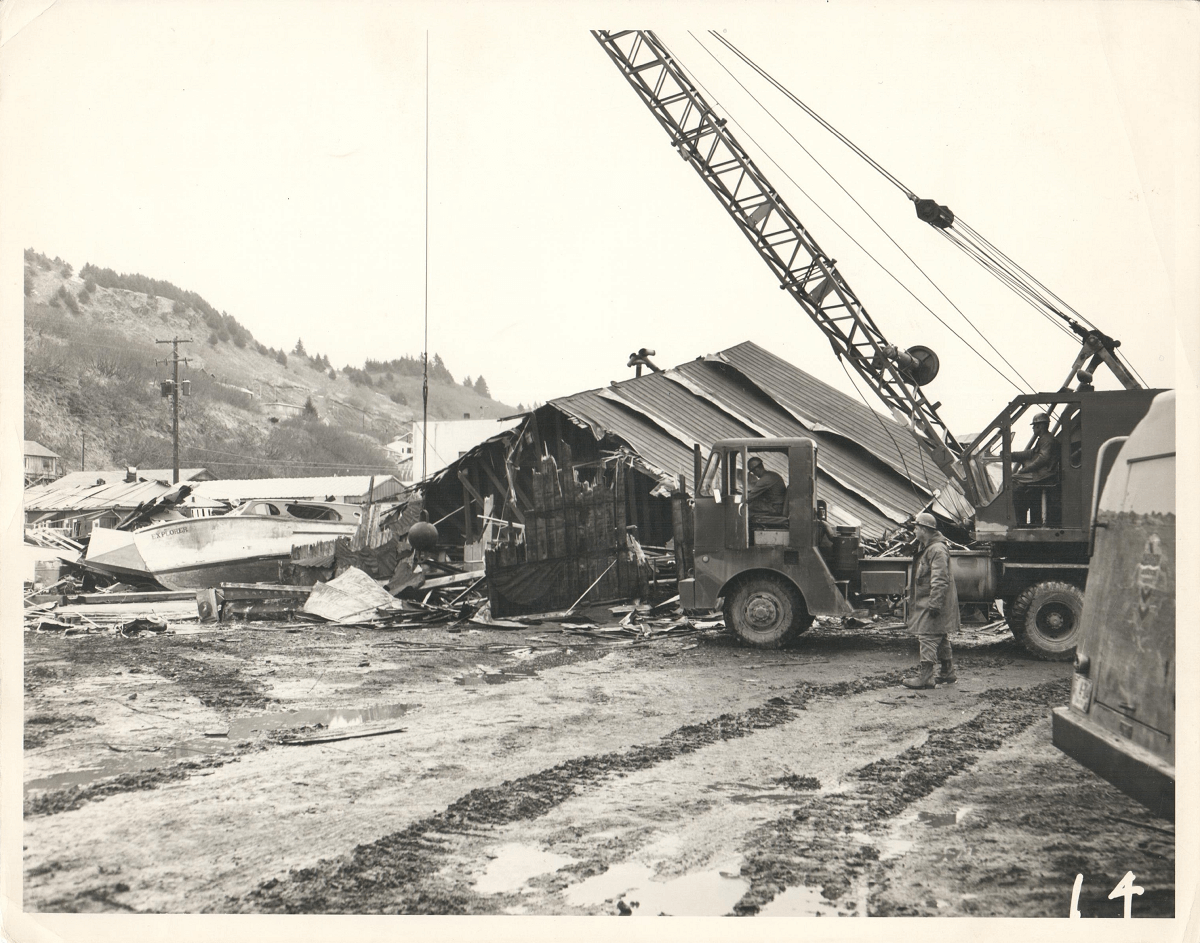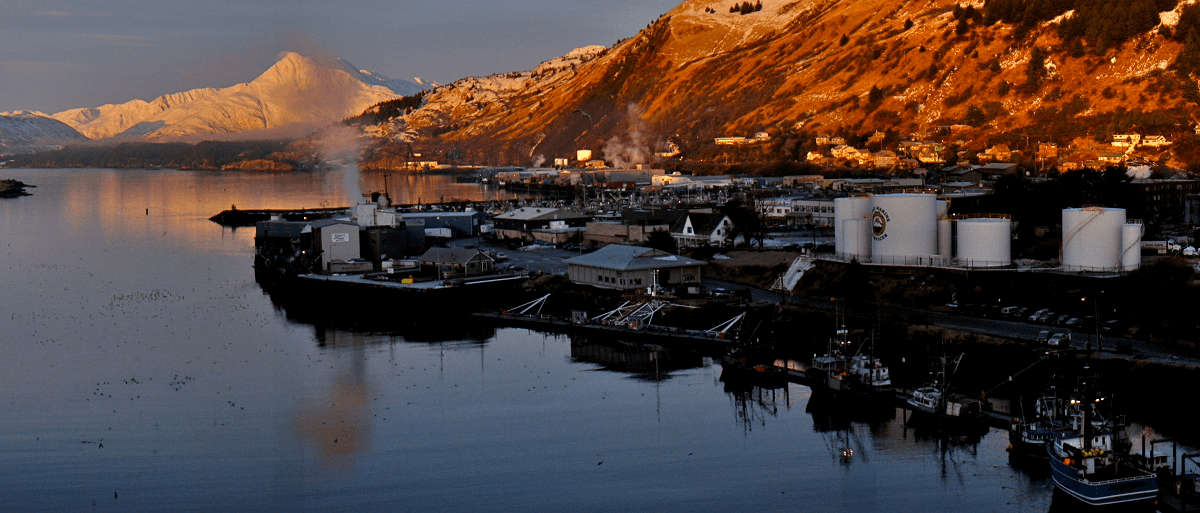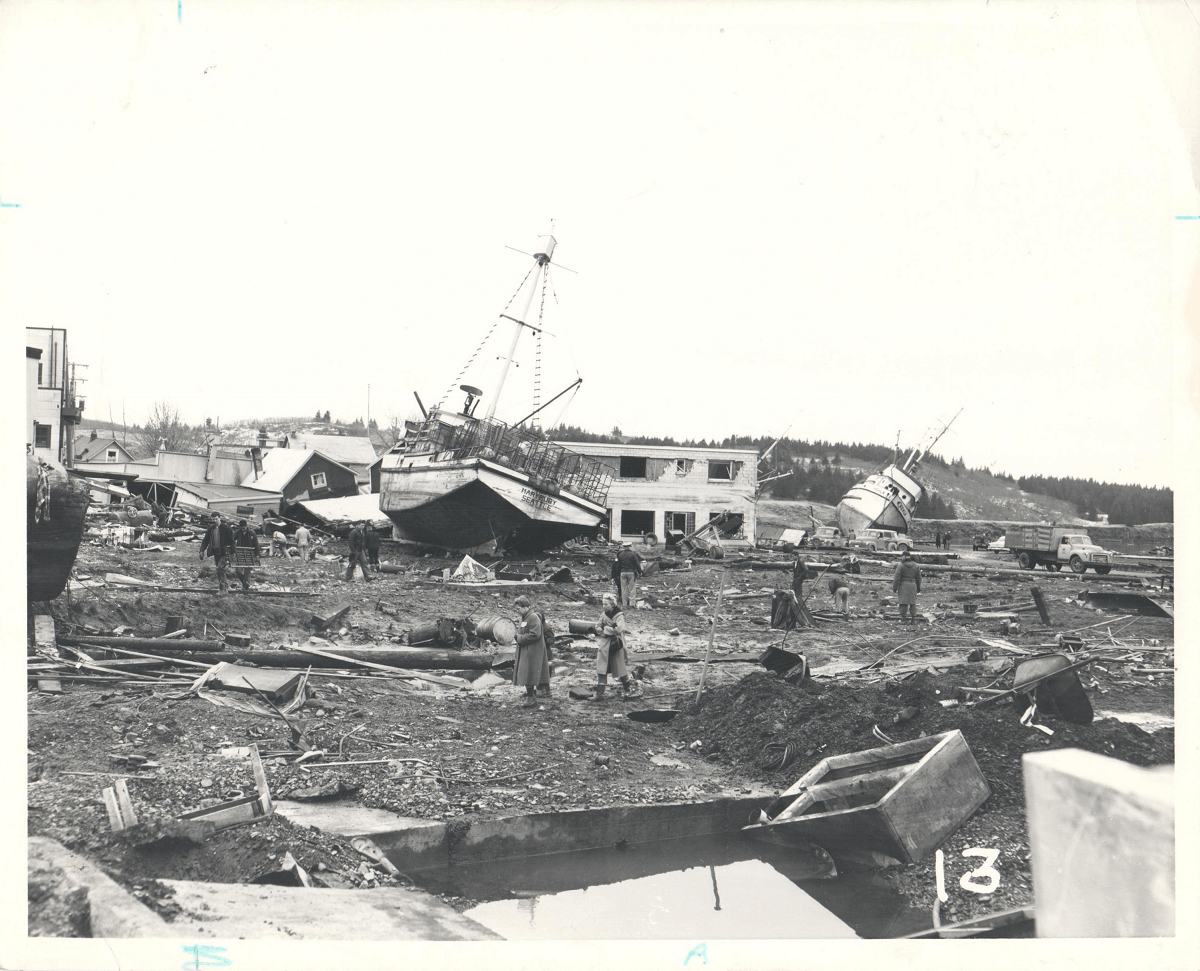Chapter 5: Rebuilding
Listen to firsthand accounts of the rebuilding period in Kodiak following the 1964 earthquake and tsunami.

Kodiak townsfolk pulled together – sharing food, water, shelter, and clothing – as they set about to rebuild their lives. For many, though, rebuilding downtown Kodiak in the same location seemed unfeasible. The center of town, along with the northeast end of Kodiak Island, had sunk nearly six feet during the earthquake and, as a result, now flooded with seawater every day at high tide.
This aerial view of Kodiak prior to the 1964 earthquake has been edited to show the water inundation from the tsunami. The tsunami that ravaged the waterfront following the earthquake wiped out the entire Erskine and commercial holdings and the APA cannery.
Leif J. Norman photo courtesy of Nancy Norman Sweeney
“Urban renewal was probably the best thing that happened after the tidal wave. That’s when the Feds come in and they start rebuilding the town. They redesigned it.” ~ Kevin Arndt

Before the earthquake struck, though, city fathers already had begun thinking about redesigning old Kodiak. Coincidentally, many cities across the country had been qualifying for low-interest loans to revitalize downtown areas through the federal Urban Renewal program. After the earthquake and tsunami, residents, downtown property owners, and the City of Kodiak implemented these loans to replace fishing boats, houses, commercial buildings, and a boat harbor.
Onlookers stand near the Kodiak Motors building to watch the demolition of Wodlinger’s Drugstore in downtown Kodiak after the tsunami laid waste to the center of town.
Leif J. Norman Photo, March 30, 1964, courtesy of Nancy Norman Sweeney
“We felt urban renewal almost did more damage than the earthquake … Urban renewal did straighten the streets and we got paved streets. [We] got something out of it. But they did take a lot of buildings, some of the historical buildings from downtown. We felt bad that those were disturbed.” ~ Wanda Fields

Clearing the town of old buildings, damaged or not, was the first step in rebuilding. Next, heavy equipment flattened hills and excavated gravel from the toe of Pillar Mountain to fill the low-lying center of town. Before long, the hilly town of Old Kodiak, with its winding gravel roads, cottonwood trees, and mix of commercial buildings and small houses, gave way to the downtown we know today: a level landscape of wide paved streets, restaurants, bars, banks, and stores flanking the small boat harbor.
A cleanup crew wields a wrecking ball to knock down the remains of Tony’s Bar, which was heavily damaged by the tsunami.
Leif J. Norman photo, March 30, 1964, courtesy of Nancy Norman Sweeney
“You know we had a big event in ’64. You know where the damage was done. Common sense should say that, well, maybe we shouldn’t build in these areas because it happened once in ’64 … we should learn from these things, but generally we don’t. Human nature being what it is, people like to live close to the ocean.” ~ Bud Cassidy

In the footprint of Old Kodiak now stands the commercial hub at the water’s edge, officially designated a “tsunami zone,” or land not 100 feet above sea level. Hundreds of fishing vessels and nine fish processing plants pack the working waterfront of Kodiak, one of the three most productive commercial fishing ports in the country. And many homes, too, line the water’s edge north of town, built for the ocean view but within reach of waves the size of the 1964 tsunami.
City Hall and the Kodiak Daily Mirror published bulletins for 29 days following the earthquake that listed casualties, relayed warnings, and occasionally added humor in the mix. This bulletin, published March 31, 1964, four days after the earthquake, reported that Ole Johnson, superintendent of Kodiak Electric Association, was looking for power poles along the waterfront when he heard a fisherman ask another: “Did you find your wife yet, Joe? The reply was, “Heck no, I have been too busy looking for my boat.”

On page 4, the bulletin of March 31, 1964 listed the names of boats lost or left onshore in the wake of the tsunami.
LOST: Seabird, Jaguar, Lucky Star, Henning J. Oranius, Victory Maid, Lois, Spruce Cape, Ocean Queen, KFC6, UF2.
HIGH AND DRY UPTOWN: Quadra, Cindy Albatross, Hekla, Mary Ruby, Sholl’s Scow, Yukon, A. RIBICH, Selief, Betts, Explorer, and Boat 7613.
